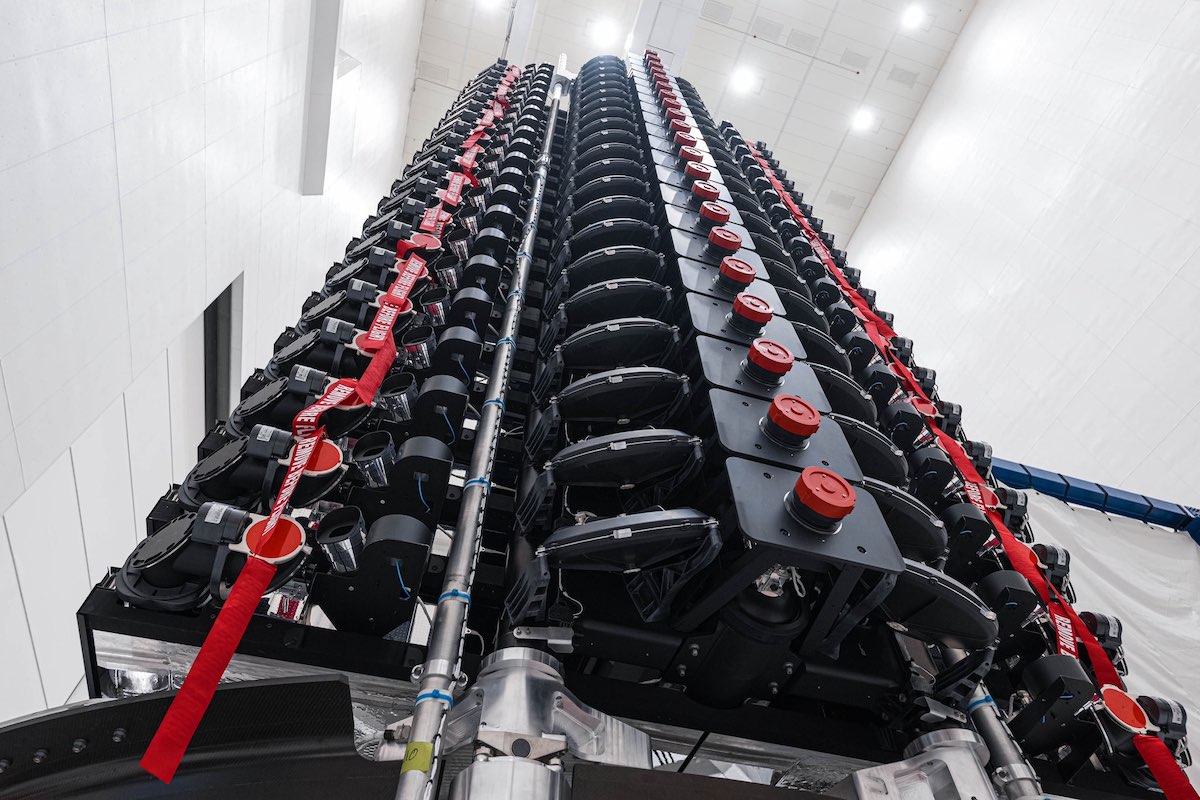Space News & Blog Articles
Live Coverage: Falcon 9 faces Florida thunderstorms Sunday on second launch attempt
 File photo of SpaceX’s Starlink V2 Mini satellites inside a payload processing facility at Cape Canaveral. Image: SpaceX
File photo of SpaceX’s Starlink V2 Mini satellites inside a payload processing facility at Cape Canaveral. Image: SpaceX
SpaceX will make another attempt to launch a Falcon 9 rocket from Cape Canaveral after thunderstorms postponed the mission on Saturday. The rocket with 22 second-generation Starlink satellites aboard is now scheduled to liftoff at 7:09 p.m. EDT (2309 UTC) but weather is again expected to be a problem.
In a forecast issued on Friday, the 45 Weather Squadron issued on Saturday predicted only a 30 percent change of acceptable conditions at the opening of Sunday’s launch window, but that improves to 75 percent by the end of the window. After the initial launch time there are three backup opportunities at 8:50 p.m. EDT (0050 UTC), 9:41 p.m. EDT (0141 UTC) and 10:31 p.m. EDT (0231 UTC).
On Saturday evening, SpaceX repeatedly pushed back the launch time as thunderstorms battered the Florida Space Coast. It eventually targeted a point 10 seconds before the end of the day’s launch window at 11:03:50 p.m. EDT (0303:50 UTC Sunday). Ground teams started the automated fueling process for the Falcon 9 but the launch director called a scrub with about 14 minutes left on the countdown clock.
After lifting off from Space Launch Complex 40, the Falcon 9 will head south-east, targeting an orbit inclined at 43 degrees to the equator. After separating from the second stage about two and a half minutes into flight, the booster will arc downrange for a landing on the drone ship Just Read the Instructions, which will be stationed in the Atlantic east of the Bahamas.
It will be the sixth flight for the first stage booster, tail number 1076, which launched the CRS-26, OneWeb Launch 16 and Intelsat IS-40e missions. It has also performed two Starlink previous delivery missions.
Two burns of the second stage will be required to place the satellites into the required 303 by 294 km orbit. Separation of the 22 satellites is scheduled to occur just over an hour into the flight.
It will be the seventh launch of the so-called V2 mini satellites which are larger and have four times the bandwidth of the previous models. The full-sized V2 Starlink satellites are due to be launched by SpaceX’s fully-reusable Starship vehicle but the delayed debut of Starship led SpaceX to create a condensed version of the satellites so they could be launched on Falcon 9.
According to statistics compiled by Jonathan McDowell, an astronomer and widely-respected expert on spaceflight activity, SpaceX has launched 4,837 Starlink satellites to dat, and the number of Starlink satellites currently in orbit is 4,497.
In early May, SpaceX announced it had more than 1.5 million subscribers to Starlink. The company’s internet service is available in more than 56 countries.
When you subscribe to the SpaceZE News Feed, we will send you an e-mail when there are new updates on the site so you wouldn't miss them.

